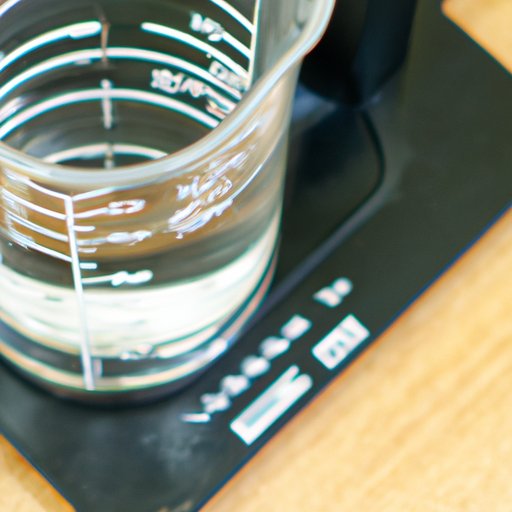I. Introduction
Density is an important physical property that we encounter in everyday life. It affects everything from the food we cook to the materials we build with. Understanding density is crucial for both scientific and practical reasons, and it is a concept that everyone should have a basic understanding of.
II. Step-by-Step Guide: How to Find Density for Beginners
Density is defined as the ratio between an object’s mass and volume. The formula for calculating density is:
Density = Mass / Volume
Here is a step-by-step guide for finding density:
- Measure the mass of the object in grams or kilograms.
- Measure the volume of the object in cubic centimeters or cubic meters. The volume can be calculated by measuring the dimensions of the object and using the appropriate formula.
- Divide the mass by the volume to get the density in grams per cubic centimeter (g/cm³) or kilograms per cubic meter (kg/m³).
To help you better understand this process, consider the following example:
If a cube has a mass of 100 grams and a volume of 50 cubic centimeters, the density would be:
Density = Mass / Volume = 100 g / 50 cm³ = 2 g/cm³
It’s worth noting that density can also be determined by measuring the amount of displacement an object causes in a given volume of liquid. This method is particularly useful for irregularly shaped objects.
III. The Importance of Density in Everyday Life
Density has many real-world applications. For example, in the manufacturing industry, it is used to ensure that materials used in production are consistent. In cooking, density is vital for creating the perfect textures in foods. In addition, density is essential for choosing the right materials for construction projects, such as selecting the best wood for a particular project.
If we ignore density, the consequences can be severe. For instance, cooking without taking density into consideration can result in a texture that is either too hard or too soft. Similarly, ignoring the density of materials in construction can result in increased risks of accidents and damages to structures.
IV. Fun Experiments: Discovering Density Through Science
If you want to explore density further, there are several simple experiments you can do at home using common household items. Here are two examples:
Experiment 1: Floating and Sinking
- Fill a large bowl or container with water.
- Gather a selection of small objects with different densities, such as a cork, a small stone, and a paperclip.
- Drop the objects into the water one at a time and see which ones sink and which ones float.
The objects that float have a lower density than water, while those that sink have a higher density.
Experiment 2: Layering Liquids
- Gather several liquids with different densities, such as water, oil, and syrup.
- Pour the liquids into a clear glass or jar in order of increasing density, with the most dense liquid at the bottom.
- Observe the layers of different liquids.
This experiment demonstrates how liquids with different densities can be layered on top of each other without mixing.
V. Common Mistakes When Finding Density and How to Avoid Them
When calculating density, there are several common mistakes that can be made. Some of these include measuring the wrong units or mistaking the mass for the weight of an object.
To avoid these mistakes, it is essential to carefully measure the mass and volume using the correct units. It’s also important to distinguish between mass and weight. Mass is a measure of the amount of matter in an object, whereas weight is the measure of the force of gravity acting on the object’s mass.
VI. Advanced Techniques for Finding Density: Taking Your Knowledge to the Next Level
If you are interested in more advanced techniques for finding density, there are several other formulas and methods you can explore. These include using Archimedes’ principle to measure the density of an irregular object or using buoyancy to determine the density of liquids.
One important formula that is used to calculate the density of gases is the ideal gas law, which relates the pressure, volume, and temperature of a gas to its density.
VII. Conclusion
Density is an important concept that has many real-world applications. Whether you are cooking, building, or just curious about science, understanding density is crucial. By following the step-by-step guide, exploring simple experiments, and avoiding common mistakes, you can develop a solid understanding of density and take your knowledge to the next level with more advanced techniques.
